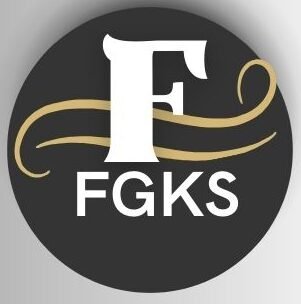The U.S. Bicentennial Quarter stands out in numismatics chronicles because it appeared in both 1975 and 1976 for celebrating America’s 200th birthday. The majority of bicentennial quarters exist in common form, which can only be exchanged for 25 cents, but special varieties have reached astonishing auction prices, reaching over $200,000. In this article, we’ll learn what causes this high value, which bicentennial quarters are considered particularly valuable, and how many such quarters are still in circulation.
United States Bicentennial Quarter: Its Value and Identification
Understanding the Bicentennial Quarter

The bicentennial quarter’s design is different from the normal Washington quarter and has a few special elements:
1. On the sleeve (obverse side), there is a standard left-facing portrait of George Washington.
2. The reverse side of the bicentennial quarter displays a colonial orchestra player with a flaming torch encircled by 13 artistic stars, which represent the initial 13 states.
3. The dual date represented here displays “1776-1976” to celebrate America’s 200th anniversary.
Reasons for Valuation
Bicentennial quarters gain higher market value than typical quarters because certain minting errors combine with their composition along with good preservation quality.
1. Printing errors during the quarter-making process produce double die defects, which interest collectors of bicentennial-based coins.
2. Most bicentennial quarters were created from copper-nickel clad materials, but select specimens produced from 40% silver result in elevated value.
3. The worth of a coin rises when it remains in excellent condition by showing minimal wear marks along with being free from scratches.
4. Rarity exists because certain coins were created in minimal numbers or demonstrate singular elements. These coins are valuable.
Which fetches more money?
A few bicentennial quarters have achieved maximum auction sales values.
The 1976-S Proof Bicentennial Quarter includes 40% silver content that produces a reflective mirror surface. It can cost upwards of $200,000.
1976-D Double Die Obverse Quarter: This coin has a double effect due to a printing error, which can make it worth about $200,000.
1976-S Silver Clad Bicentennial Quarter: This coin is made of 40% silver and is considered part of special collectible sets. Its value depends on condition.
1976-D Mint State Bicentennial Quarter: This coin is uncirculated from the Denver Mint, and its shiny condition makes it expensive.
Coins Currently in Circulation

More than two billion bicentennial quarters exist in circulation at present. All bicentennial quarters used in regular commerce lack additional worth except when they come with exceptional condition or show printing mistakes.
How to Identify Valuable Bicentennial Quarters
The following method will help you determine if your bicentennial quarter holds any value.
The Mint Mark identification appears on the front side under Washington’s ponytail area. A San Francisco mint mark appears as “S” and “D” marks the coins from Denver, but Philadelphia Bicentennial Quarters do not display any mint marks.
The edge of silver-coated coins shows a silvery sheen, whereas copper-nickel-clad coins produce an edging with a copper hue.
Inspection with a magnifying device enables identification of double elements or strange design defects in the coin.
Ascertain the condition of the coin by examining whether it exists without scratches because high-quality pieces fetch greater values.
Protecting Valuable Coins
Once you locate a valuable bicentennial quarter you hold in your possession:
Cleaning the coin threatens to decrease its market price.
A protective holder should be used for the coin storage to prevent damage.
Obtain expert evaluation through a certified grading system or certified dealer.
Bicentennial quarters primarily have a value of twenty-five cents, yet specific flaws in production, peak condition rating, or silver content can transform certain coins into valuable assets worth more than $200,000. Collectors, along with enthusiasts, must handle their coins with care because valuable coins may hide in typical everyday transactions.
FAQS
1. What is the $200 million rare bicentennial quarter?
The $200 million rare bicentennial quarter refers to a special 1976 quarter with an error or misprint that significantly increases its value. Due to its rarity, it is considered a treasure among collectors.
2. Why is the 1976 bicentennial quarter so valuable?
The value stems from its rarity and the error during the minting process. Certain 1976 bicentennial quarters, especially those with unique characteristics or mistakes, are worth a substantial amount—up to $200 million in some cases.
3. How can I identify a rare bicentennial quarter?
Look for any notable minting errors, such as doubled dies, incorrect stamps, or off-center strikes. These mistakes make the coin significantly more valuable. You can also consult expert coin guides for specific features to look for.
4. Are all 1976 bicentennial quarters valuable?
No, only certain 1976 bicentennial quarters with minting errors or unique features are considered valuable. Regular bicentennial quarters are worth their face value, but those with rare characteristics can fetch much higher prices.
5. How much is a rare bicentennial quarter worth?
The value of a rare bicentennial quarter can vary. Some can be worth hundreds, thousands, or even millions of dollars, depending on the error, condition, and rarity of the coin.







